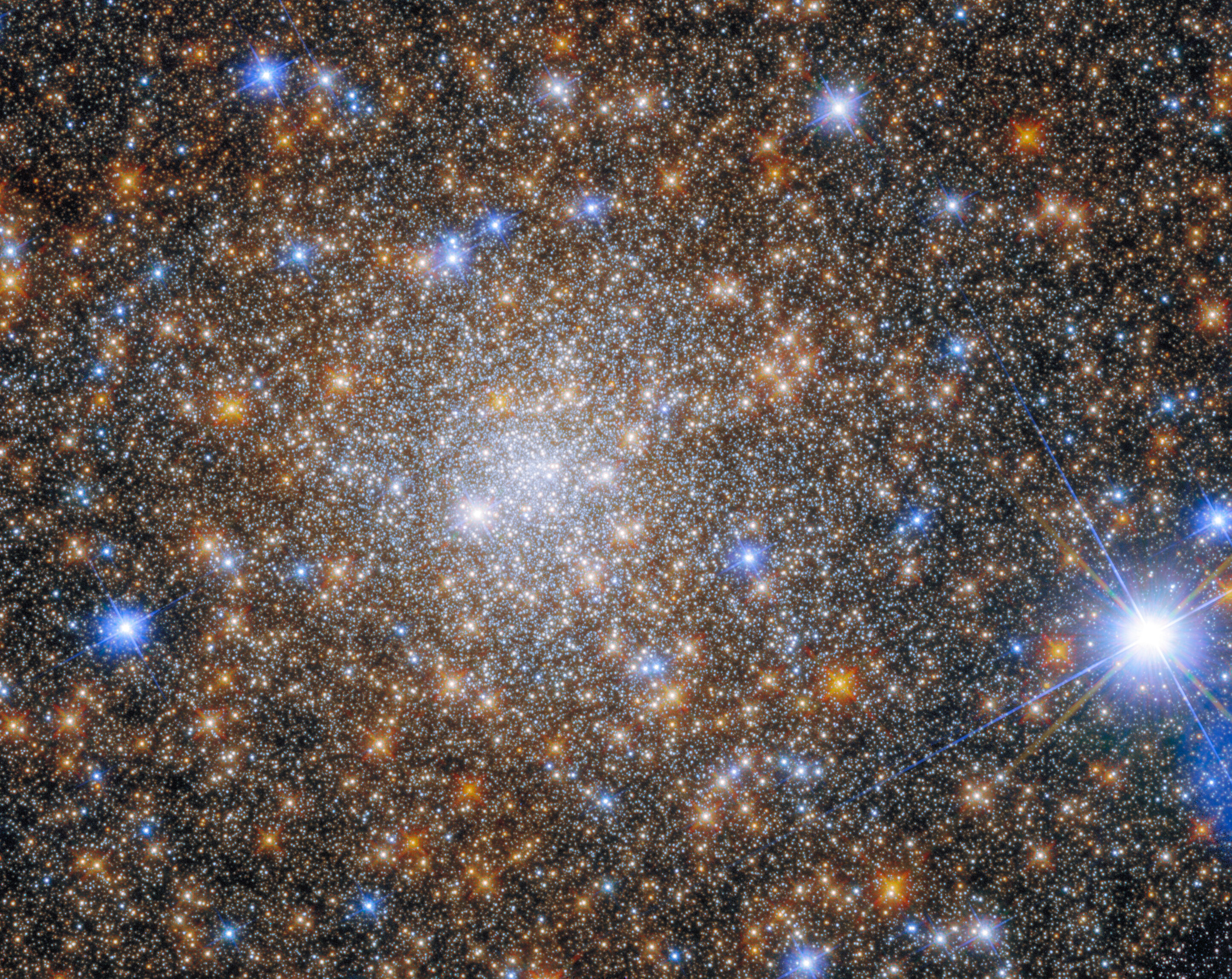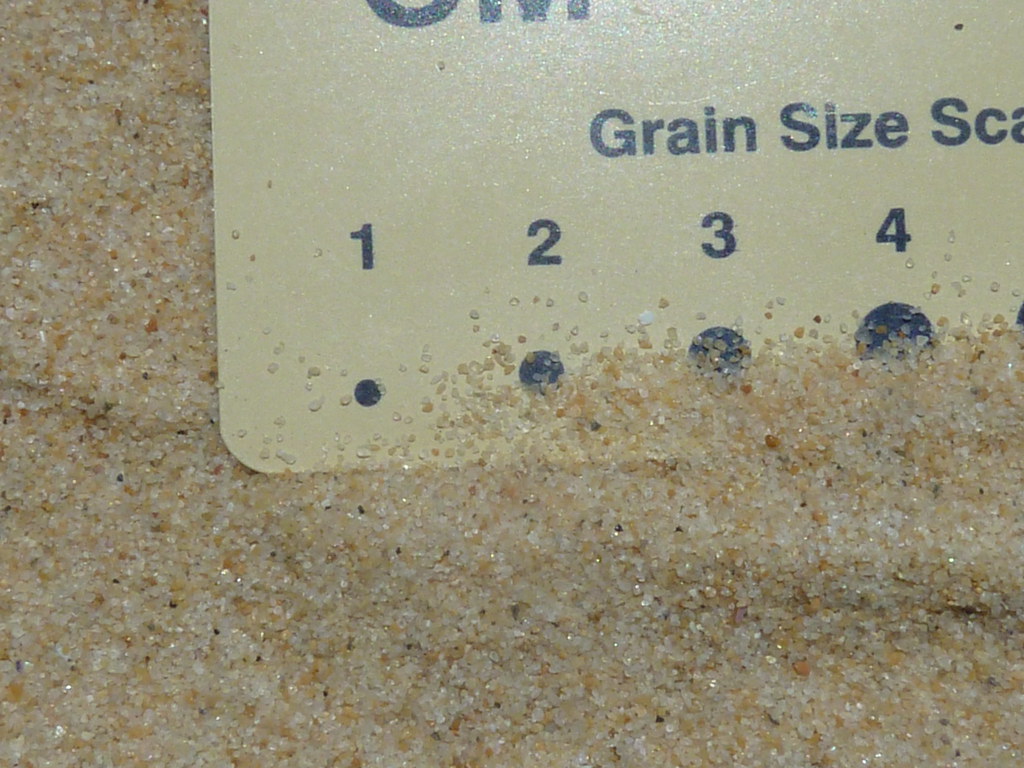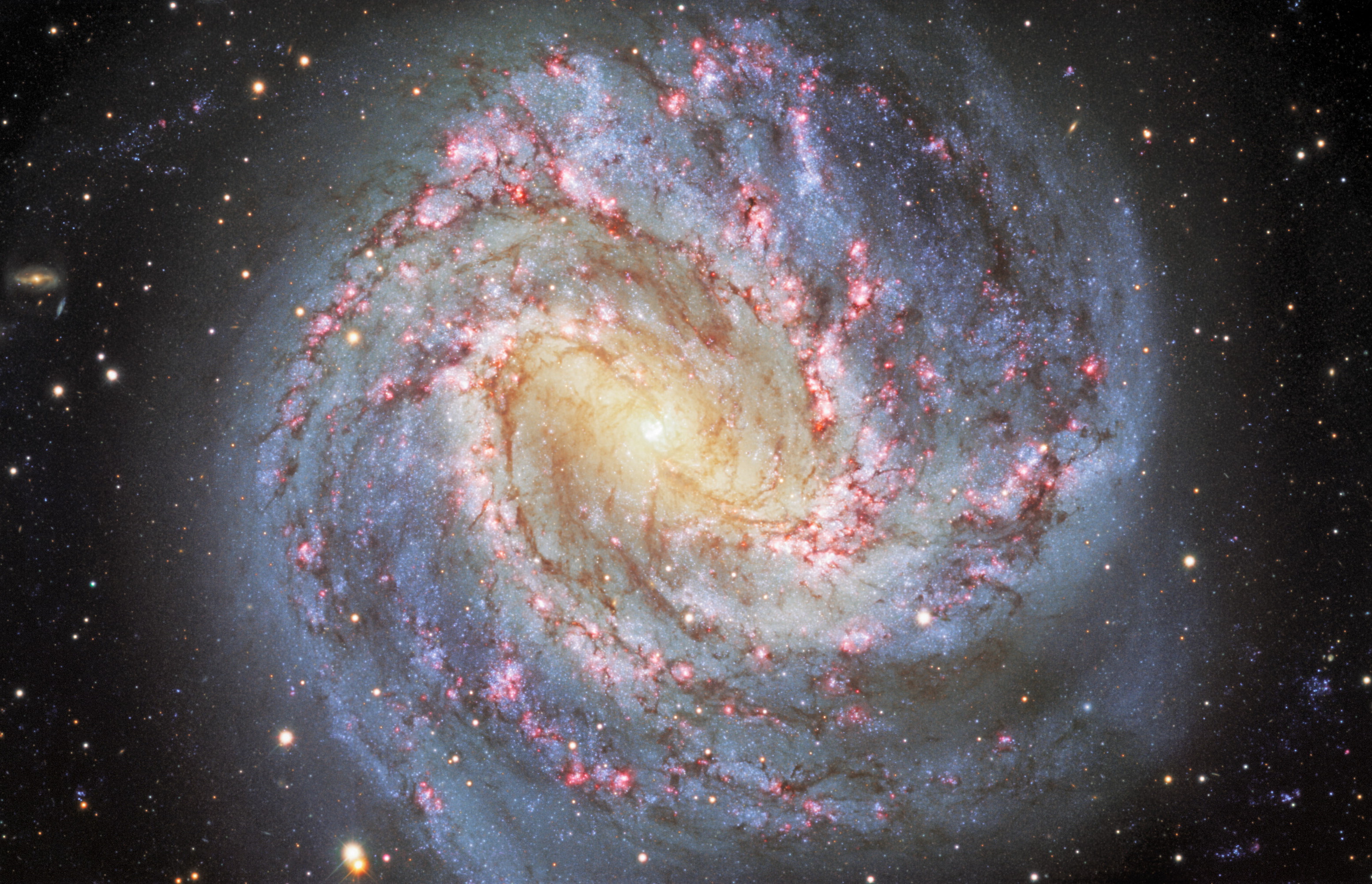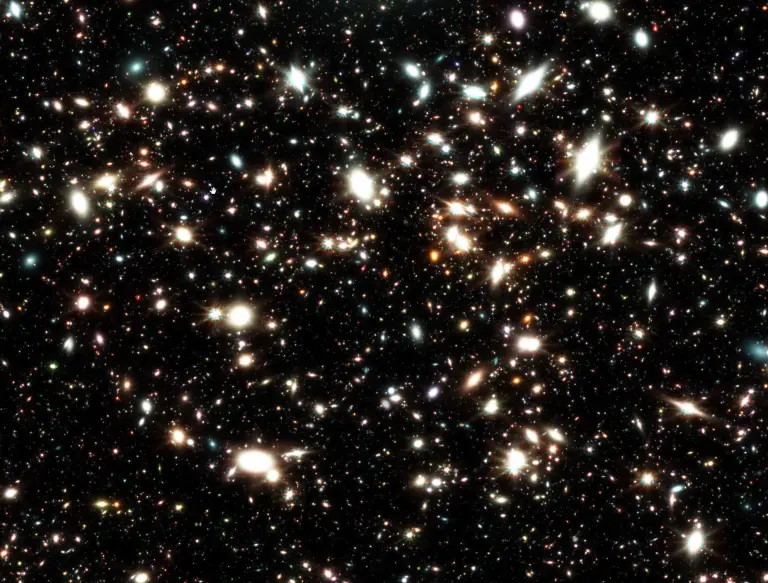Ask Ethan: What if the Sun were a grain of sand?

- Astronomical scales are so enormous that the human mind struggles to comprehend them. The Sun, some 1.4 million km across and 150 million km distant, is light-years away from the nearest star.
- What if we shrunk everything down, however, so that the Sun were merely the size of a single grain of sand?
- From our Solar System to stars in the Universe to galaxies and more, here's what the cosmic story would look like if everything were shrunk down billions of times in scale.
From the perspective of a human being, it’s almost impossible to fathom just how mind-bogglingly large the cosmic scales are. An average human is a little less than 2 meters in height, but planet Earth is more than 12,000 kilometers in diameter. The Sun is larger, at 1.4 million kilometers across, and incredibly far away: some 150 million kilometers distant. And these numbers, grand though they may seem, are paltry compared to what lies beyond our inner Solar System. Neptune is more than 4 billion kilometers away; the next-nearest star, Proxima Centauri, is 4.2 light-years (or ~40 trillion km) distant, while the Milky Way itself is more than 100,000 light-years across.
All of that doesn’t even take us beyond our own galaxy, to the trillions of others stretched across the observable Universe. Yes, it’s incredibly hard to fathom, but what if we shrunk those scales down to something more familiar? That’s the idea of Patreon supporter Pete Smoyer, who wants to know:
“If a grain of sand was a scale model of a star in a galaxy, how far apart would each grain of sand / star be on average? At this scale, how far would the Andromeda galaxy be from the Milky Way?”
Let’s take the analogy literally, using our own Sun as the template for a star. If the Universe were shrunk down so that the Sun was a grain of sand, what would the Universe look like?

The Sun as a grain of sand
Our Sun is the largest, most massive, and also most naturally perfect spherical object found in our Solar System. Its vital stats are as follows:
- Age: 4.6 billion years.
- Mass: 2 × 1030 kg.
- Diameter: 1.4 × 109 meters (or 1,400,000 km).
- Distance from Earth: 1.496 × 1012 meters (or 150,000,000 km).
What would happen if we were to attempt to shrink it down, even if just in our minds, to the size of a single grain of sand?
Sand, as far as we understand it, is determined by what we call grain size. Whenever you have a sample of sediment, the average size of the grains, also known as the particle size, determines what classification it falls into. Above 2 mm (or 0.08 inches) in size, the grains/particles are known as gravel: too big to be classified as sand. Below 0.0625 mm (or 0.002 inches) in size, the grains/particles are known as silt, with particles smaller than silt forming clay, and particles smaller than clay forming a colloid when mixed with water.
But sand itself is between gravel and silt: comprised of particles between 0.0625 mm and 2 mm (0.002 and 0.08 inches), which means we’ll be shrinking the Sun down by around a factor of a trillion.

The Sun and stars as sand
We have to remember, though, that not all stars are identical to one another, just as all grains of sand aren’t identical. The smallest, lowest mass stars are red dwarfs, which are around 7.5-8% the mass of the Sun and can be nearly as small as the planet Jupiter, with the smallest known red dwarf coming in at 12% the diameter of the Sun: just 20% larger than Jupiter.
On the other hand, stars can be much more massive, and also much larger, than our Sun. The most massive star known is R136a1, found in the Tarantula Nebula, which comes in at 260 times the mass of the Sun. Although this class of stars, the blue supergiants, can be large in terms of physical size, they “only” reach up to about 25 times the Sun’s diameter. The largest known stars are evolved, red supergiant stars, and they can be several hundred, or even up to ~1000, times the size of the Sun.
In other words, just as grains of sand come in a variety of sizes, so do the stars themselves. If we ignore the puffiest, most evolved stars and treat the smallest sand grain as the smallest star, this causes the Sun to come out at around 0.5 millimeters in diameter as a grain of sand: precisely 2.8 trillion times smaller than its actual physical size.

A microscopic Earth
Shrinking the Sun down to these small scales would entail imagining the rest of the Universe scaled down as well, in the same proportion as we scaled down the Sun to make it commensurate with the size of a grain of sand. If the Sun would be 0.5 millimeters in diameter, then that would make the entirety of planet Earth about 4.6 microns across: a little bit smaller than a red blood cell, but a little bit larger than a single bacterium. The continent of Australia would be just over 1 micron in size. The third-largest impact crater on our planet, Sudbury Basin in North America, would be about the size of the Zika virus: just 45 nanometers, or smaller than the wavelength of visible light.
As for human beings?
We’d be smaller than an atom. A full-grown human would be around 600 femtometers in size: about the same size as 40 uranium nuclei lined up end-to-end against one another. The physical size of your thumb’s topmost bone — known as the distal phalanx — would correspond to about 1.7 femtometers: the size of a single proton. Our own planet, and everything on it, would be minuscule.

A tiny Solar System
If the Sun were a grain of sand, what would that mean for the scale of the Solar System? Earth’s orbital distance in its motion around the Sun occurs at a radial separation of about 150 million kilometers. If the Sun were a grain of sand, that would correspond to a distance of about 5.3 centimeters, or a little more than 2 inches.
Jupiter, our largest planet, would be just below the size of the smallest sand grains to fall into the “silt” category, but would trace out an orbit separated by 28 centimeters (almost a foot) from the Sun. Neptune, our most distant planet, would be about a third the size of Jupiter, but would trace out an orbit that’s 1.6 meters (about 5’3″) wide.
Our Kuiper belt would go out about 2.4 meters (almost 8 feet), before we run into the edge of the Kuiper cliff that gives way to the scattered disk and then the Oort cloud. Compared to all of the other distances so far, the Oort cloud is tremendous: beginning about 50-100 meters from the grain-of-sand that represents our Sun and extending to more than 10 kilometers away.

The distance to the nearest stars
If the Sun were a single grain of sand — remember, we chose a grain that was representative of its actual size relative to the other stars, of 0.5 millimeters in diameter — then how far away would the other stars in our galaxy be?
Proxima Centauri, the closest star, would be about 14 kilometers away, and would be among the smallest grains of sand that wouldn’t be downgraded to be classified as silt. A little bit farther, at around 15 kilometers distant, would lie two Sun-sized grains of sand: representing the stars Alpha Centauri A and B.
Within about 30 kilometers, there are only around 10 total grains of sand, but that number begins to rise rapidly with increasing distance.
- Within 45 kilometers, there are 33 additional grains of sand beyond our Sun.
- Within around 200 kilometers, there are around 2000 grains of sand.
- And within 250 kilometers, that number rises to around 3000 grains of sand.
That last figure corresponds to the number of stars found within a distance of around 82 light-years (or 25 parsecs) from our Sun, and represents the best number available today for the number of known stars in our local vicinity.

The scale of the Milky Way
The Milky Way galaxy, however, is much larger than this. With up to an estimated 400 billion stars inside — corresponding to 400 billion grains of sand — its stars are distributed into a spiral-lined disk that’s only a couple of thousand light-years thick, but that spans a little over 100,000 light-years in diameter.
When we scale the Sun down to a grain of sand, the dimensions for the Milky Way change dramatically. The diameter of the Milky Way would then be about 300,000 kilometers, or just slightly less than the distance from the Earth to the Moon. (Incidentally, it’s also the distance that light travels in one second.) For thickness, the Milky Way would be about 6,000 kilometers thick at the distance of the Sun, which would be approximately 70,000 kilometers from the Milky Way’s center.
Whereas on Earth, you’d only need to scoop out about 8 cubic meters of sand from the beach to wind up with 400 billion grains of sand, for the Milky Way, you’d have to cover around 4 × 1023 cubic meters of volume to distribute those 400 billion grains of sand across in order to fit them all in, to scale. On Earth, the average grain of sand is in physical contact with at least one other grain of sand; in space, if the Sun were a grain of sand, the average separation distance between sand grains would be measured in kilometers.

Isolated beaches
Here on Earth, sand is only found along coastlines where rock has eroded and broken down over geologically long periods of time. Weathering breaks large rocks down into smaller ones, and minerals, such as quartz and feldspar, eventually wear down into the sand grains we’re familiar with.
Just as sand is only found where conditions are right, largely along coastal areas and only where inland rocks are routinely transported into larger bodies of water (lakes, seas, and oceans), in our Universe, stars are almost exclusively found where large collections of matter have gathered together: in galaxies.
Around 100 years ago, we were only just discovering that the grand spirals and ellipticals in the night sky were galaxies unto themselves; the idea that they were was called the “island universe” hypothesis. Given that we’re using sand to represent the stars, it makes sense to return to that analogy, as these cosmic beaches, replete with grains of sand, are isolated concentrations that can interact, cluster, and even merge together, but in general are separated by vast, enormous distances across the cosmos: millions of light-years under most typical circumstances.

From the Milky Way to Andromeda (the two largest, most star-rich galaxies in the Local Group), for instance, you’d have to travel a whopping 7.5 million kilometers, and that’s if the Sun and all the stars within them were shrunk down to a grain of sand. The next-nearest large galaxies beyond the Local Group, such as the stunning pair of Bode’s galaxy and the Cigar galaxy, are more like 36 million kilometers away from us, but are only separated from one another by around 400,000 kilometers: an example of galaxies that are interacting, tightly grouped, and are on the path toward merging.
The Virgo cluster of galaxies, the largest rich cluster of galaxies to us, would be around 150 million kilometers away (about the same as the Earth-Sun distance if they weren’t shrunk down), and contains over 1000 large galaxies within a sphere around ~15 million kilometers in size.
And if you wished to go to the edge of the observable Universe, containing the trillions upon trillions of “island universes” within it, you’d have to venture out a little over 100 billion kilometers (around 130 billion kilometers) away: about the equivalent of the distance that Sedna, the only body in hydrostatic equilibrium within our Solar System that has such a large eccentricity, will reach at aphelion, its farthest distance from the Sun.

Although shrinking the Sun down to a grain of sand — and shrinking all other cosmic distances and scales commensurately — might help reduce the absolute scale of the Universe to more familiar terms, it remains as sparsely-populated as ever. Consider that, if you were to take all the grains of sand contained in all the beaches and coasts and bodies of water on Earth, you’d wind up with a large number: 7.5 quintillion (7.5 × 1018). If you then multiplied the number of grains of sand by 300, and scattered them across the Solar System from here to the farthest orbital reaches of Sedna, you’d have an idea about how rare it would be to find a star within the Universe.
Yes, it’s true that our Universe is vast, impressive, and filled with enormous numbers of stars and galaxies. But the act of taking just 300 times the number of grains of sand on Earth and scattering them across a sphere nearly 1000 times the Earth-Sun distance in radius, where each grain of sand is analogous to a star and that sphere is analogous to the volume of the observable Universe, helps illustrate just how “empty” our Universe truly is. If the Sun were a grain of sand, a volume of space the size of the entire Earth would contain fewer than 1 billion grains of sand within it. The Universe, no matter how you view it, is already incredibly empty.
Send in your Ask Ethan questions to startswithabang at gmail dot com!





